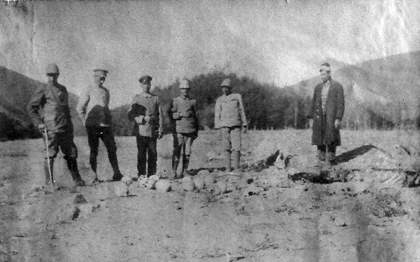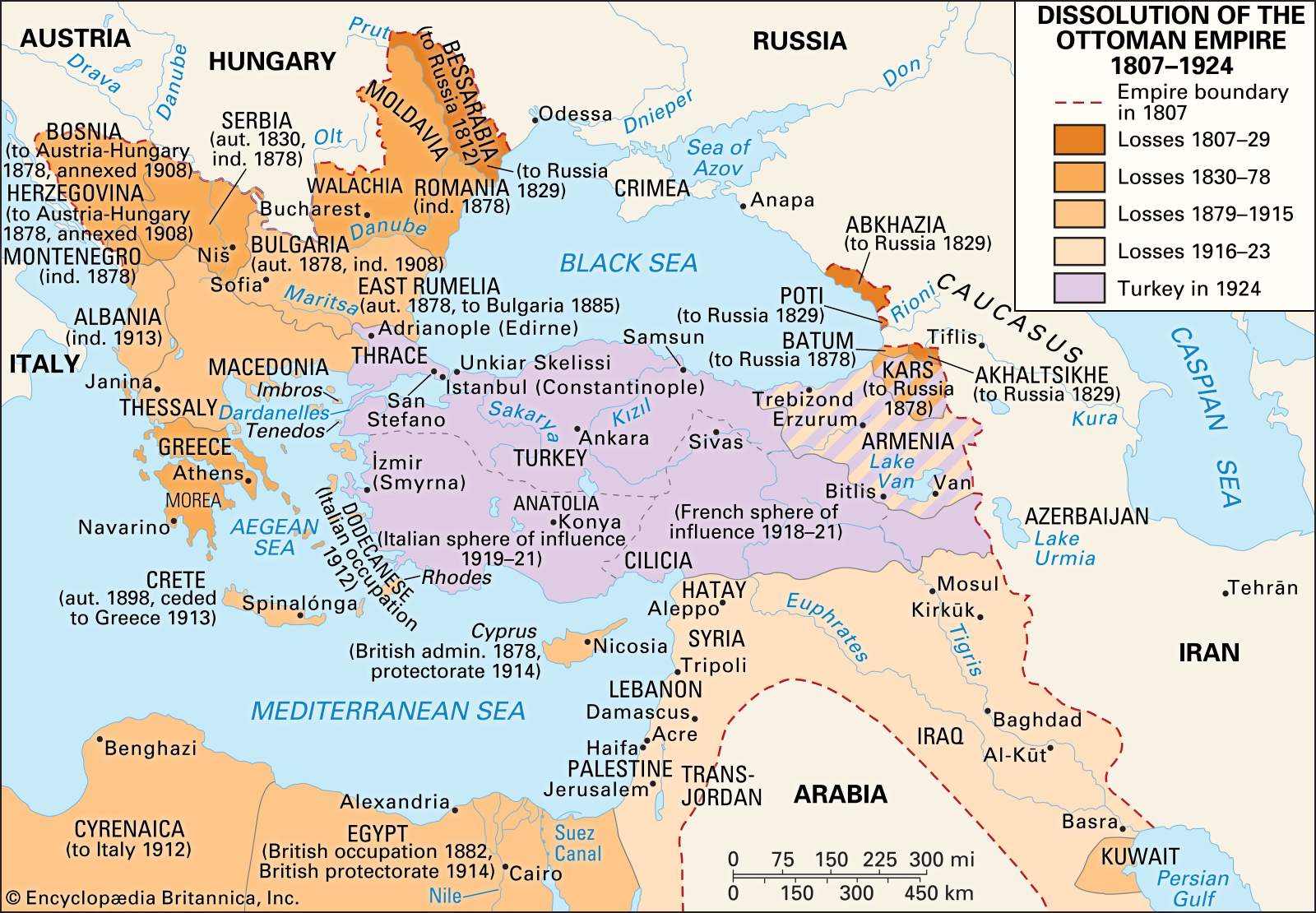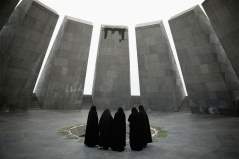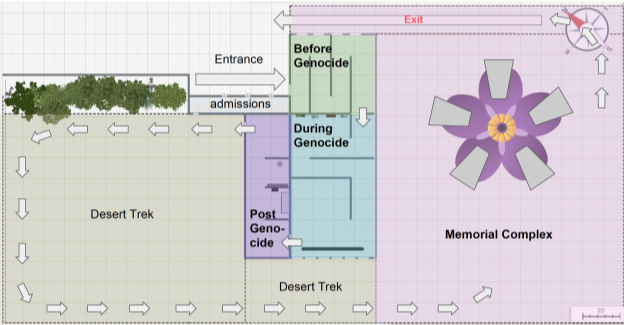California Memorial of the Armenian Genocide
| ✅ Paper Type: Free Essay | ✅ Subject: Human Rights |
| ✅ Wordcount: 4196 words | ✅ Published: 23 Sep 2019 |
California Memorial of the Armenian Genocide
A Genocide Museum, An Observance of Armenian Resilience
Introduction
The definition of genocide was first articulated by lawyer, Raphael Lemkin.[1] After World War Two, Lemkin worked with the United Nations on the Convention on the Prevention and Punishment of the Crime of Genocide, where the concept of genocide was first introduced as:
“any of the following acts committed with intent to destroy, in whole or in part, a national, ethnical, racial or religious group, as such:
- Killing members of the group;
- Causing serious bodily or mental harm to members of the group;
- Deliberately inflicting on the group conditions of life calculated to bring about its physical destruction in whole or in part;
- Imposing measures intended to prevent births within the group;
- Forcibly transferring children of the group to another group.”[2]
This undoubtedly gave a label to the recent events of the Holocaust, but Lemkin had been formulating his concept of genocide long before the war began. Lemkin, in fact, cited the crimes against Christian Armenians as a prominent influence in his development of its definition.[3] If this is the case, why do United States students spend so much time learning about the Holocaust, and if they hear about the Armenian genocide at all, it often falls into the category of “other genocides” alongside every other genocide that isn’t the Holocaust?[4]
In the early twentieth century, 1.5 million, of an estimated 2 million Armenians, were killed by the Young Turks and the non-Armenian people of Anatolia.[5] While not considered to be a part of the genocide event, it’s important to note that there had been massacres of Armenians by the Ottoman Turks in the mid 1880s. Some consider these massacres as the “dress rehearsal” for the upcoming Armenian Genocide.[6] In 1915, on order of the Turkish government, Armenians marched away from their homes in Anatolia and were expelled to the deserts of the Middle East.[7] Along the way they were raped, tortured, and killed.[8] Armenians died in a myriad of gruesome ways like drowning, suicide, execution before mass graves, and being burned alive.[9] If Armenians managed to survive the initial attacks and make it into the deserts, most would perish the slow death of starvation and exposure.[10] From there, most survivors were imprisoned in concentration camps.[11] If Armenians managed to stay out of concentration camps, they were taken and forcefully converted to Islam
The genocide began on April 24th, 1915. In 2015, the centennial passed without the recognition of the genocide by the Turkish or United States government.[12] Turkey denies the genocide and the United States fears repercussions from Turkey if it were to declare the mass killings of Armenians a genocide (Figure 1).[13] United States school curriculum venerates the Holocaust as the world’s great tragedy, and in this idolatry, other genocides are evaluated as  less important because not as many lives were lost as gruesomely as they were in the Holocaust.[14] With the additional factor of drastic political consequences for
less important because not as many lives were lost as gruesomely as they were in the Holocaust.[14] With the additional factor of drastic political consequences for
Figure 1. Turkish and German Officers posing with Armenian skeletons (Genocide Museum)
acknowledging the genocide, the Armenian Genocide has gone historically unacknowledged.[15]
The United States government has yet to officially acknowledge the Armenian Genocide, so the California Memorial of the Armenian Genocide seeks to bring awareness to the genocide and put pressure on the United States. The objective of the memorial is to teach visitors about the genocide and give them the space to reflect on it. With time, the California Memorial of the Armenian Genocide will aid in increased awareness, therefore increased pressure on the United States for official acknowledgment.
Background
Historic Politics
In the 14th century, the Ottoman Turks inhabited a small territory of Anatolia that lies within the borders modern-day Turkey.[16] They laid the foundation for the success of the Ottoman Empire, one of the most powerful states of the 15th and 16th centuries.[17] A primary source of the Empire’s power, identity, and pride was its vastness.[18] In its prime, the Ottoman Empire spanned Northern Africa, the coasts of the Arabian Peninsula, the Balkan States, and Asia Minor (Figure 2).[19] However, as the Ottoman Empire lost the Balkans and other large territories to war, the Empire began to lose its authority on the world stage.[20] Once an intercontinental Empire, the State grew smaller and its people were forced out of Africa and the Balkan States and back towards modern day Turkey.[21] Turks saw their once mighty Empire continuing to decrease in size and power and the Christian West was at fault.[22]

Figure 2. A political map showcasing the reaches of the Ottoman Empire in 1807 with the red dotted perimeter, and what its boundaries had become right before the genocide in the lightest orange and purple. (Encyclopædia Britannica)
When the Turks saw their home inhabited by Armenians, both some of the earliest established Christians and a longtime scapegoat of the Empire, eliminating the Armenians was the next step to “Turkifying” the empire.[23] In an attempt to save their empire and rid themselves of non-Turk citizens, the Ottoman Turks expelled Armenians to the deserts. Though Armenians had just as much claim to the land, if not more, than Ottoman Turks.[24] Armenians were well established on the Anatolian Peninsula.[25] Their homes, effects, churches, and community were in Anatolia and had been throughout the Empire’s reign.[26] But as Turks had been flooding back into modern day Turkey, the Young Turks seized control of the Ottoman Empire.[27] The Young Turks would lead in the expulsions of Armenians and back their citizens who killed Armenians. While there may not have been explicit laws declaring the killing of Armenians, the technicality Turkey uses today to deny the genocide, with the Young Turks in power, no law nor threat of consequence inhibited their actions.
Current Politics
Named the Economist’s 2018 country of the year, Armenia has shown its ever-resilient nature again.[28] Under a corrupt government and a power hungry Serzh Sargysan’s rule, Armenia hadn’t been thriving.[29] The Economist cites, “a chance of democracy and renewal,” after Armenians fled the streets to protest Sargysan’s attempt to extend his presidential run despite term restrictions.[30] Nikol Pashinyan was among the leaders of these protests that resulted in his election to Prime Minister.[31] Once again, despite the odds being against them, Armenians endured.
Due to such drastic disadvantages as autocratic government and persecution, Armenians, both residents of Armenia and the diaspora, have developed a pride in Armenian resilience.[32] When social fabric and their homeland are forcibly taken away, Armenians can simultaneously mourn the loss, and celebrate their resilience. Resilience, renaissance, and perseverance characterize a large part of Armenian identity.
Regarding perceptions of the genocide today, Turkey acknowledges the brutalities of the time, but asserts that the mass loss of Armenian lives was not a genocide because there is no tangible evidence of a policy against Armenians.[33] This is merely a technicality. And while it may be the case that there’s limited evidence of deliberate policy against Armenians, the atrocities speak for themselves.
In Robert Melson’s review, “Recent Developments in the Study of the Armenian Genocide,” Melson reiterates Raymond Kevorkian’s response to the Turkish argument:
The physical destruction of the Armenian population of the Ottoman Empire … was conceived as a necessary condition for the construction of a homogenous, unified Turkish nation-state –the supreme objective of the Young Turks. The two phenomena, in other words, are indissolubly linked: we cannot understand the one if we ignore the other.[34]
Project
Previous Representations
The Armenian Genocide is not largely recognized, though there exist about two hundred memorials in the world.[35] Most prominently, the genocide has been represented in Yerevan at Tsitsernakaberd Memorial Complex, a genocide memorial and museum in Armenia’s capital.[36] It is the central gathering place for Armenians to memorialize the most formative event in Armenian history.[37] There, twelve statuesque basalt slabs encircle a bed of red and white flowers that surround an eternal flame representing Armenian resilience.[38] The flame’s location, nestled within the slabs, provides a sense of isolation that speaks to what it means to be a victim to a an underacknowledged genocide.[39]
Additionally, there have been less traditional commemorations of the genocide. Since the genocide isn’t well known, attracting visitors to a physical location is difficult. The Armenian Genocide Museum of America responded to this roadblock by creating an online. Here visitors can read through a simple slideshow of the timeline of the genocide. While the online museum isn’t fully developed, it still has an indisputable reach, not achieved by other Armenian genocide museums and memorials.
A powerful unorthodox memorial is the Emmy winning film, Meran Vor Aprink (They Died So We May Live), which was put together by Diane and Charles Paskerian, and some members of San Francisco Ballet.[40] Many of the scenes took place at Mount Davidson, San Francisco’s Memorial to the Armenian genocide.[41]

California Memorial of the Armenian Genocide
Figure 3. Women gathered around the eternal flame at the Tsitsernakaberd Memorial Complex (Moleres).
The California Memorial of the Armenian Genocide seeks to open a dialogue about the Armenian Genocide in California. This will be a physical museum and memorial located in the desert of southern California. This location has the potential to draw California and Nevada residents and visitors. In addition, Los Angeles, and California as a whole, have become a home for a significant portion of the Armenian diaspora. This location will allow for a balance of Armenian and non-Armenian visitors. The memorial’s proximity to Japanese Internment Camps and existence on Native American land could raise interesting discussions about United States culpability, without actively drawing too much attention away from the Armenian Genocide. Ideally, visitors will walk away with compassion and support for Armenians, as well as with an impetus to engage politically and learn about current and past genocides. Ideally, with publicity, the project’s reach would span a more global audience and bring greater awareness of the genocide.
Visitors will be guided along a timeline of the genocide from the facility’s point of view. After this museum, they will walk through a fenced portion of the desert of Southern California. This will serve as a symbolic space for visitors to reflect. Lastly, visitors will visit the Memorial Complex. Here there will be traditional memorials crafted by the Armenian diaspora. As visitors move through the memorial complex traditional memorials will fall away and be replaced with Armenian food, music, and dancing. Here the museum hopes to show first, that there was a genocide, and second, that that genocide does not define Armenia. In celebrating the social fabric of the diaspora today, we honor Armenian resilience (Figure 4).

Figure 4. Rough layout of the facility, 2018 (Jensen)
The pre-genocide section will feature many photographs rather than words or numbers to illustrate both the individuality and group identity of Armenians. The objective is to humanize Armenians and figuratively “put Armenians on the map”, for those who may not have ever even heard of Armenia or its genocide. In addition, other headlines and events of the time will be featured to show that this genocide really wasn’t that long ago.
In the “during” genocide portion of the museum, the most expansive of the three sections, there will be testimonials from survivors played while visitors engage visually with the exhibit. Regarding the merits and demerits of exhibiting words as opposed to images, and the one versus the many: the goal is to exhibit all of these categories, not limiting the museum to only one approach. Thus, giving a more expansive and poignant representation for visitors. This section will be less guided than the rest, so as to let visitors be drawn to the images, words, or numbers that speak to them most.
Finally, the museum will finish by demonstrating Armenia post-genocide There will be a contrasting map of historic Armenia and modern-day Armenia, along with current attitudes of nations to the genocide. It is at this point that Turkish denial and overall global perception of the genocide will be introduced to give visitors a sense of where Armenia stands in current events.
A path will then lead visitors out of the museum on a short faux “in situ” trek through the California desert, mirroring the expulsion of Armenians. Along the path there will be a few photos of the suffering in the desert. Beyond that, there will not be much intervention, so as to give visitors the space to process what they know and have learned of the genocide. This time-filler will ideally serve the purpose of eschewing the common museum experience of overstimulation.
Following the walking of the path, visitors will arrive at the final Memorial Complex. There will be interpretations of Armenian identity crafted and arranged by Armenian-Americans. Rather than the maintenance of an image or a certain quality of memorial, the museum’s priority will be crafting a personal experience for Armenians, for them to explore and expose their unfiltered experiences. Finally, to avoid leaving visitors only knowing Armenia for its genocide, there will be a celebration of Armenia with food, music, and dancing, following the memorials. While there is potential for an uncomfortable and contentious element to a celebration, I’ve heard first hand from Armenian-Americans two things: first, that a large part of acknowledging the genocide is acknowledging that Armenia is not just “the country with the genocide”, and second, that “nothing Armenian happens without food”. Thus, in celebration of Armenia, the museum and memorial experience will close with, “Armenia: Beyond Genocide”, at which visitors can try khorovats, lavash, lahmajoun, and ponchiks. Visitors are encouraged to engage with others and discuss their different interpretations and experiences of the genocide.
Improvements on Previous Representations
Bitch if we still didn’t know about it… then uh we could use another memorial
Literally putting the Armenian genocide on the map even tho that website is accessible and whatever
American ignorance is horrifying ‘
While past interpretations of the Armenian genocide are moving and likely more powerful to Armenians than that of something created by a non-Armenian college student, I hope to create better understanding in my community: I look to increase support of Armenians and understanding of the genocide among the American public with the California Memorial of the Armenian Genocide. In addition, I want to push for a complex narrative of the genocide: Turkish and global voices will be included to avoid creating a one-sided representation of the story.
My plans are not necessarily an improvement to previous representations of the genocide; rather, an extension to pre-existing memorials and museums. Ideally this will reach more non-Armenian people than past genocide memorials. In an effort to reach a larger audience, the museum will provide visitors with more context than others might, due to the assumption that some visitors to the museum and memorial may not even know what Armenia is. Hopefully this memorial can spark new genocide discussions in the American public.
I hope my interpretation of the Armenian Genocide will serve the United States community in starting new conversations about our tolerance for violence and genocide. I hope individuals will walk away feeling closely tied to Armenian history and can interact more supportively with Armenians they engage with in their daily lives. In addition, ideally, I hope this memorial could serve as a means of getting closer to official Turkish acknowledgement of the genocide along with reparation negotiations with Armenia. Perhaps, as this memorial and museum gain visitors, the Armenian genocide will more frequently be common knowledge.
Conclusion
The Armenian Genocide is one of the lesser known genocides
Perhaps with the push of its citizens, the United States could take steps toward holding Turkey responsible. By holding Turkey accountable, we can begin to establish a more just accountability across the globe and hopefully establish a no tolerance policy for genocide.
Bibliography
- “Armenia.” University of Minnesota. Accessed January 5, 2019. https://cla.umn.edu/chgs/holocaust-genocide-education/armenia.
- Armenian Assembly of America. “The Story.” Armenian Genocide Museum of America. Last modified 2015. Accessed January 5, 2019. http://www.armeniangenocidemuseum.org/#C1S1.
- “Armenian Genocide Museum – Institute Virtual Tour (Interactive 3D).” Video file. YouTube. Posted by MemcoInc, April 22, 2011. Accessed January 5, 2019. https://www.youtube.com/watch?time_continue=190&v=8qfx6X94vFQ.
- “The Armenian Genocide (1915-16): Overview.” The United States Holocaust Memorial Museum. Accessed January 2, 2019. https://encyclopedia.ushmm.org/content/en/article/the-armenian-genocide-1915-16-overview.
- Armenian National Institute. “Memorials to the Armenian Genocide.” Armenian National Institute. Accessed January 5, 2019. https://www.armenian-genocide.org/memorials.html.
- “The Decline of the Ottoman Empire.” In Brittanica Academic. https://academic-eb-com.ezproxy.whitman.edu/levels/collegiate/article/Ottoman-Empire/111081#44387.toc.
- “The Dissolution of the Ottoman Empire, 1807–1924.” Map. https://www.britannica.com/place/Ottoman-Empire/The-empire-from-1807-to-1920/media/434996/679.
- Dowsett, Charles, and Ronald Grigor Suny. “Armenia.” In Britannica Academic, by G. Melvyn Howe and Alexsey Aleksandrovich Mints. https://academic-eb-com.ezproxy.whitman.edu/levels/collegiate/article/Armenia/108699.
- The Economist. “The Economist’s Country of the Year 2018.” December 18, 2018. Accessed January 5, 2019. https://www.economist.com/leaders/2018/12/22/the-economists-country-of-the-year-2018.
- The German and Turkish Officers Posing to Take Photographs with Skulls of the Armenian Victims. Photograph. Genocide Museum. Accessed January 5, 2019. http://www.genocide-museum.am/eng/arm_archive.php.
- Goffman, Daniel. The Ottoman Empire and Early Modern Europe. Cambridge University Press, 2002. Accessed January 2, 2019. https://books.google.com/books?hl=en&lr=&id=3uJzjatjTL4C&oi=fnd&pg=PR9&dq=ottoman+empire&ots=SQC3QigoGk&sig=fx8YNMzgnqhGgBvjQy1qMlI0904#v=onepage&q=ottoman%20empire&f=false.
- A History of the Armenian Genocide. By Ronald Grigor Suny. Narrated by Eric Martin. Audible Studios, 2015.
- Irish, John, and Emile Picy. “France passes Genocide Law, faces Turkish Reprisals.” Reuters. Last modified January 23, 2012. Accessed January 1, 2019. https://www.reuters.com/article/us-france-turkey-genocide/france-passes-genocide-law-faces-turkish-reprisals-idUSTRE80M28G20120123.
- Jensen, Brenna. Genocide Memorial Layout. Image. December 28, 2018. Digital file.
- Karpat, Kemal H. “The Rise of the Ottoman Empire: Studies in the History of Turkey, Thirteenth-Fifteenth Centuries.” International Journal of Turkish Studies 18, nos. 1-2 (2012): 119-22. https://search-proquest-com.ezproxy.whitman.edu/central/docview/1346922443/fulltextPDF/EC56D17DA42A4A88PQ/6?accountid=1208.
- Kifner, John. “Armenian Genocide of 1915: An Overview.” The New York Times. Accessed January 4, 2019. https://archive.nytimes.com/www.nytimes.com/ref/timestopics/topics_armeniangenocide.html?mcubz=1.
- Koobatian, John. “Young Turks.” In Britannica Academic. https://academic-eb-com.ezproxy.whitman.edu/levels/collegiate/article/Young-Turks/78078.
- Los Angeles Times. “Scenes from Armenian Genocide 100th anniversary.” April 24, 2015. Accessed January 1, 2019. https://www.latimes.com/local/lanow/la-me-armenian-genocide-anniversary-20150424-htmlstory.html.
- Mays, Mackenzie. “Armenian genocide has long been largely hidden. California schools might change that.” The Fresno Bee (Fresno, CA), November 27, 2016. Accessed January 1, 2019. https://www.fresnobee.com/news/local/education/article117052958.html.
- Melson, Robert. “Recent Developments in the Study of the Armenian Genocide.” Holocaust and Genocide Studies 27, no. 3 (Fall 2013): 313-21. https://muse-jhu-edu.ezproxy.whitman.edu/article/520472.
- Mikhail, Alan, and Christine M. Philliou. “The Ottoman Empire and the Imperial Turn.” Comparitive Studies in Society and History 54, no. 4 (October 2012): 734-43. https://search-proquest-com.ezproxy.whitman.edu/central/docview/1157837136/fulltextPDF/C959EF44BAE3493DPQ/1?accountid=1208.
- Moleres, Fernando. Women visit the Tsitsernakaberd Memorial, dedicated to the 1915 Armenian Genocide, on a hill overlooking Yerevan. Made up of 12 basalt slabs leaning inward over an eternal flame, the memorial symbolizes the rebirth of the Armenian nation. Photograph. 2005. https://www-jstor-org.ezproxy.whitman.edu/action/doBasicSearch?Query=tsitsernakaberd&acc=on&wc=on&fc=off&group=none.
- The New York Times. “Found Armenians Starving in Camps.” January 1, 1917. https://search-proquest-com.ezproxy.whitman.edu/docview/98099140/724BD9C948424447PQ/3?accountid=1208.
- The New York Times (1857-1922). “Armenian Girls Tell of Massacres.” June 1, 1919. https://search-proquest-com.ezproxy.whitman.edu/hnpnewyorktimes/docview/100359585/ABEAB084CBA4252PQ/1?accountid=1208.
- The New York Times (1857-1992). “Armenians’ Heroic Stand in Mountains.” November 27, 1915, 4. https://search-proquest-com.ezproxy.whitman.edu/hnpnewyorktimes/docview/97763975/532958029294190PQ/1?accountid=1208.
- “1915 ‘Meran Vor Aprink.’” Video file. YouTube. Posted by Charles Paskerian, May 18, 2015. Accessed January 2, 2019. https://www.youtube.com/watch?v=ev3sJv_azHw.
- “1915 Meran Vor Aprink Behind the Scenes.” Video file. YouTube. Accessed January 7, 2019. https://www.youtube.com/watch?v=7YtNoJhbGXw.
- Suny, Ronald Grigor. “Armenian Genocide.” In Encyclopædia Britannica. Accessed January 1, 2019. https://academic-eb-com.ezproxy.whitman.edu/levels/collegiate/article/Armenian-Genocide/9520.
- Totten, Samuel. Addressing the “Null Curriculum”: Teaching about Genocides Other than the Holocaust. Accessed January 2, 2019. http://www.socialstudies.org/sites/default/files/publications/se/6505/650509.html.
- “Tsitsernakaberd Memorial Complex.” Genocide Museum. Accessed January 5, 2019. http://www.genocide-museum.am/eng/Description_and_history.php.
- United Nations. “Genocide.” United Nations Office on Genocide Prevention and the Responsibility to Protect. Accessed January 5, 2019. http://www.un.org/en/genocideprevention/genocide.html.
[1] “The Armenian Genocide (1915-16): Overview,” The United States Holocaust Memorial Museum, accessed January 2, 2019, https://encyclopedia.ushmm.org/content/en/article/the-armenian-genocide-1915-16-overview.
[2] United Nations, “Genocide,” United Nations Office on Genocide Prevention and the Responsibility to Protect, accessed January 5, 2019, http://www.un.org/en/genocideprevention/genocide.html.
[3] “The Armenian,” The United States Holocaust Memorial Museum.
[4] Samuel Totten, Addressing the “Null Curriculum”: Teaching about Genocides Other than the Holocaust, accessed January 2, 2019, http://www.socialstudies.org/sites/default/files/publications/se/6505/650509.html.
[5] Ronald Grigor Suny, “Armenian Genocide,” in Encyclopædia Britannica, accessed January 1, 2019, https://academic-eb-com.ezproxy.whitman.edu/levels/collegiate/article/Armenian-Genocide/9520.
[6] “Armenia,” University of Minnesota, accessed January 5, 2019, https://cla.umn.edu/chgs/holocaust-genocide-education/armenia.
[7] “Armenian Girls Tell of Massacres,” New York Times (1857-1922), June 1, 1919, https://search-proquest-com.ezproxy.whitman.edu/hnpnewyorktimes/docview/100359585/ABEAB084CBA4252PQ/1?accountid=1208.
[8] The New York Times (1857-1992), November 27, 1915, https://search-proquest-com.ezproxy.whitman.edu/hnpnewyorktimes/docview/97763975/532958029294190PQ/1?accountid=120
[9] “Armenians’ Heroic Stand in Mountains,” The New York Times (1857-1992), November 27, 1915, [Page 4], https://search-proquest-com.ezproxy.whitman.edu/hnpnewyorktimes/docview/97763975/532958029294190PQ/1?accountid=120
[10] “Found Armenians Starving in Camps,” The New York Times, January 1, 1917, https://search-proquest-com.ezproxy.whitman.edu/docview/98099140/724BD9C948424447PQ/3?accountid=1208.
[11] “Found Armenians,” [Page 9].
[12] “Scenes from Armenian Genocide 100th anniversary,” Los Angeles Times, April 24, 2015, accessed January 1, 2019, https://www.latimes.com/local/lanow/la-me-armenian-genocide-anniversary-20150424-htmlstory.html.
[13] John Irish and Emile Picy, “France passes Genocide Law, faces Turkish Reprisals,” Reuters, last modified January 23, 2012, accessed January 1, 2019, https://www.reuters.com/article/us-france-turkey-genocide/france-passes-genocide-law-faces-turkish-reprisals-idUSTRE80M28G20120123. Such reprisals for France from Turkey give the United States government reason to believe they will face similar consequences in an already strained U.S.-Turkey Alliance.
[14] Totten, Addressing the “Null”.
http://www.socialstudies.org/sites/default/files/publications/se/6505/650509.html.
[15] Mackenzie Mays, “Armenian genocide has long been largely hidden. California schools might change that.,” The Fresno Bee (Fresno, CA), November 27, 2016, accessed January 1, 2019, https://www.fresnobee.com/news/local/education/article117052958.html.
[16] Kemal H. Karpat, “The Rise of the Ottoman Empire: Studies in the History of Turkey, Thirteenth-Fifteenth Centuries,” International Journal of Turkish Studies 18, nos. 1-2 (2012): [Page 120], https://search-proquest-com.ezproxy.whitman.edu/central/docview/1346922443/fulltextPDF/EC56D17DA42A4A88PQ/6?accountid=1208.
[17] Daniel Goffman, The Ottoman Empire and Early Modern Europe (Cambridge University Press, 2002), [Page 5], accessed January 2, 2019, https://books.google.com/books?hl=en&lr=&id=3uJzjatjTL4C&oi=fnd&pg=PR9&dq=ottoman+empire&ots=SQC3QigoGk&sig=fx8YNMzgnqhGgBvjQy1qMlI0904#v=onepage&q=ottoman%20empire&f=false.Bottom of Form
[18] Alan Mikhail and Christine M. Philliou, “The Ottoman Empire and the Imperial Turn,” Comparitive Studies in Society and History54, no. 4 (October 2012): [Page 738], https://search-proquest-com.ezproxy.whitman.edu/central/docview/1157837136/fulltextPDF/C959EF44BAE3493DPQ/1?accountid=1208.
[19] Goffman, The Ottoman, [Page 3].
[20] Suny, “Armenian Genocide,” [The Young Turks and World War 1].
[21] “The Dissolution of the Ottoman Empire, 1807–1924,” map, https://www.britannica.com/place/Ottoman-Empire/The-empire-from-1807-to-1920/media/434996/679.
[22] “The Decline of the Ottoman Empire,” in Brittanica Academic, https://academic-eb-com.ezproxy.whitman.edu/levels/collegiate/article/Ottoman-Empire/111081#44387.toc.
[23] Robert Melson, “Recent Developments in the Study of the Armenian Genocide,” Holocaust and Genocide Studies 27, no. 3 (Fall 2013): [Page 316], https://muse-jhu-edu.ezproxy.whitman.edu/article/520472.
[24] Charles Dowsett and Ronald Grigor Suny, “Armenia,” in Britannica Academic, by G. Melvyn Howe and Alexsey Aleksandrovich Mints, [History], https://academic-eb-com.ezproxy.whitman.edu/levels/collegiate/article/Armenia/108699.
[25] Dowsett and Suny, “Armenia,” [History]
[26] Melson, “Recent Developments,” [Page 316].
[27] John Koobatian, “Young Turks,” in Britannica Academic, [Page #], https://academic-eb-com.ezproxy.whitman.edu/levels/collegiate/article/Young-Turks/78078.
[28] “The Economist’s Country of the Year 2018,” The Economist, December 18, 2018, accessed January 5, 2019, https://www.economist.com/leaders/2018/12/22/the-economists-country-of-the-year-2018.
[29] “The Economist’s,”.
[30] “The Economist’s,”.
[31] “The Economist’s,”.
[32] “The Economist’s,”.
[33] Melson, “Recent Developments,” [Page 317].
[34] Robert Melson, “Recent Developments in the Study of the Armenian Genocide,” Holocaust and Genocide Studies 27, no. 3 (Fall 2013): [Page 316], https://muse-jhu-edu.ezproxy.whitman.edu/article/520472.
[35] Armenian National Institute, “Memorials to the Armenian Genocide,” Armenian National Institute, accessed January 5, 2019, https://www.armenian-genocide.org/memorials.html.
[36] “Tsitsernakaberd Memorial Complex,” Genocide Museum, accessed January 5, 2019, http://www.genocide-museum.am/eng/Description_and_history.php.
[37] “Tsitsernakaberd Memorial,” Genocide Museum.
[38] “Tsitsernakaberd Memorial,” Genocide Museum.
[39] “Tsitsernakaberd Memorial,” Genocide Museum.
[40] 1915 ‘Meran Vor Aprink,’” video file, YouTube, posted by Charles Paskerian, May 18, 2015, accessed January 2, 2019, https://www.youtube.com/watch?v=ev3sJv_azHw. This film was showcased in San Francisco City Hall for the centennial of the genocide. The San Francisco Bay Area is home to a significant portion of the Armenian Diaspora.
[41] “1915 Meran Vor Aprink Behind the Scenes.,” video file, YouTube, accessed January 7, 2019, https://www.youtube.com/watch?v=7YtNoJhbGXw.
Cite This Work
To export a reference to this article please select a referencing stye below:
Related Services
View allDMCA / Removal Request
If you are the original writer of this essay and no longer wish to have your work published on UKEssays.com then please click the following link to email our support team:
Request essay removal


